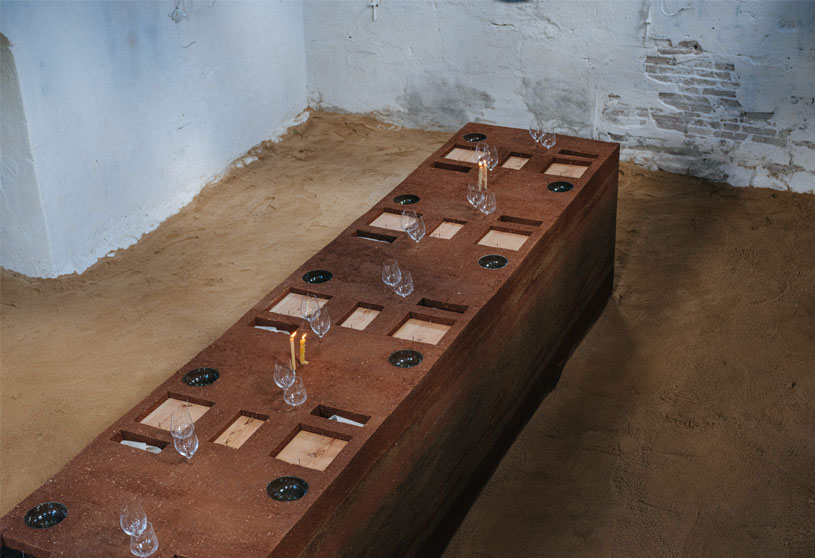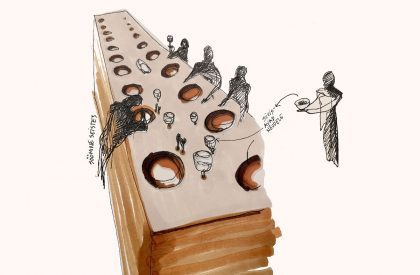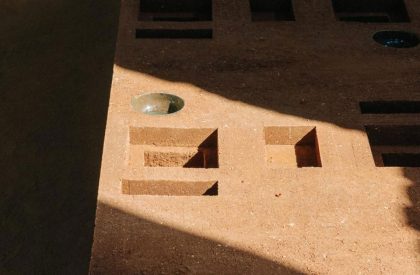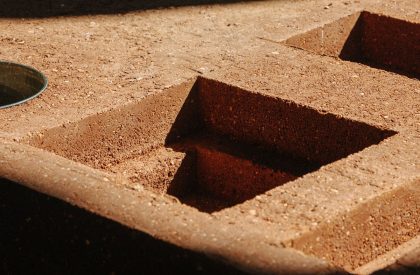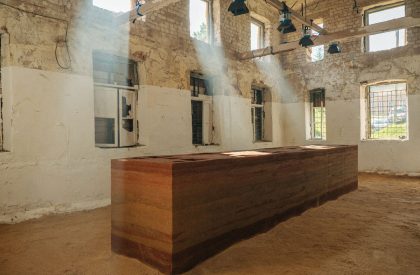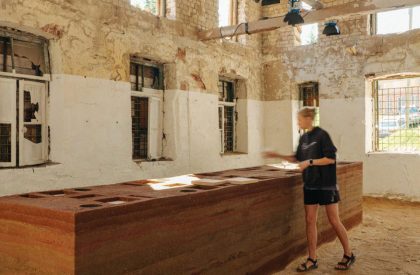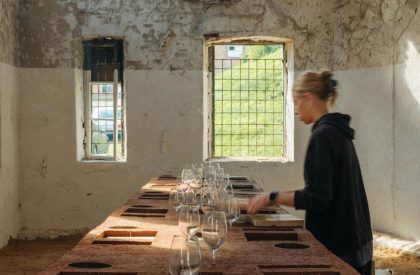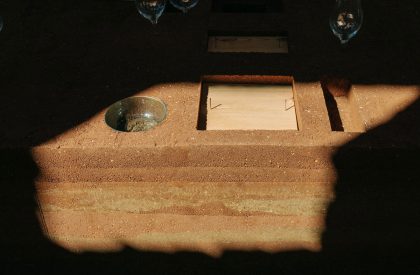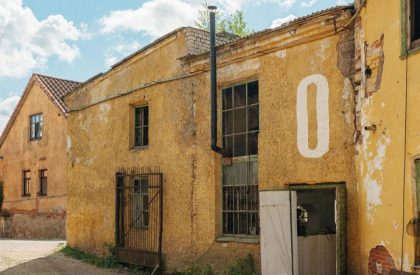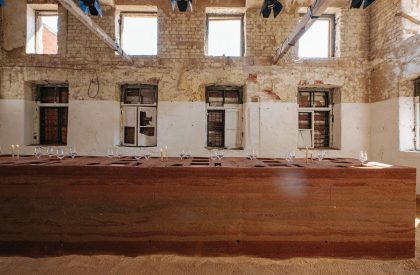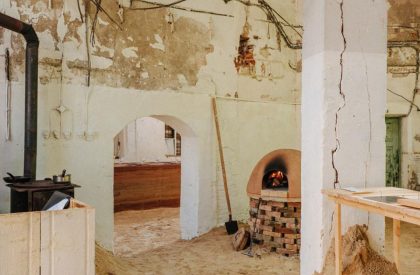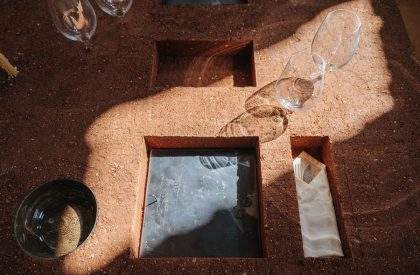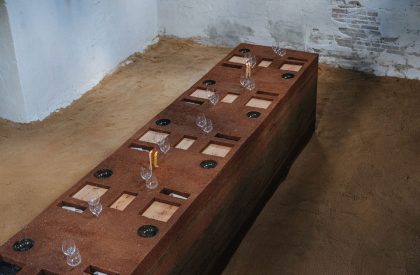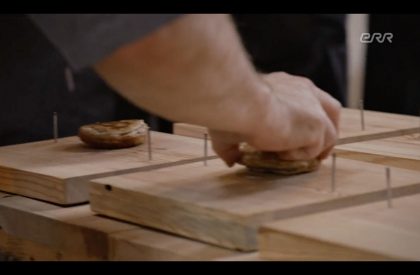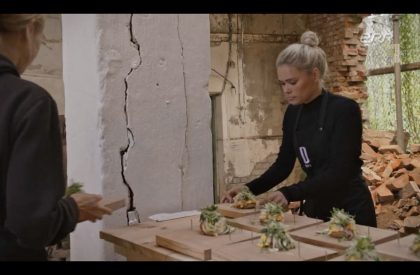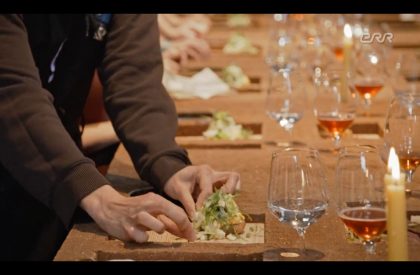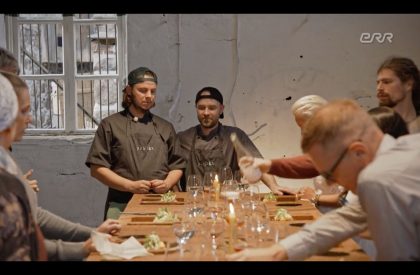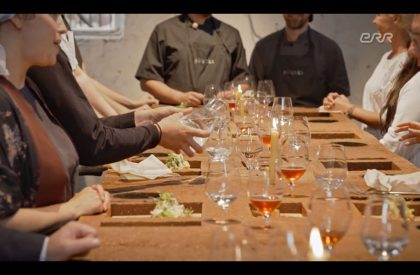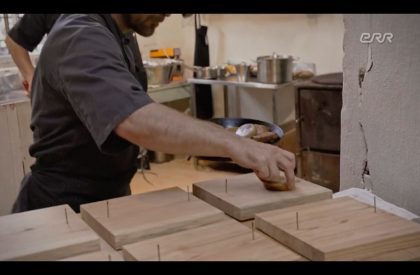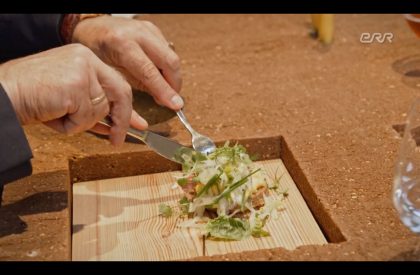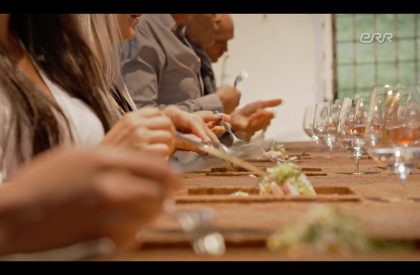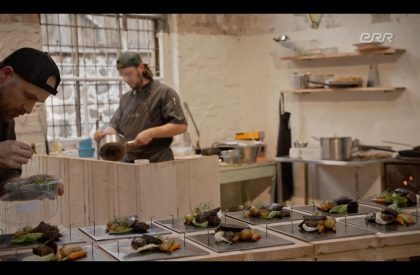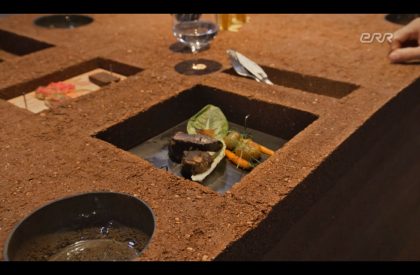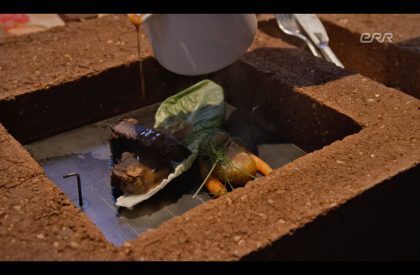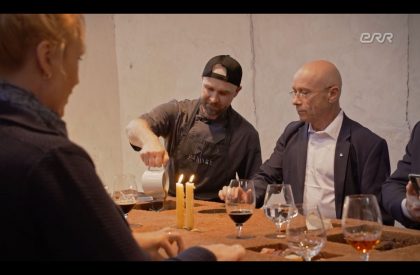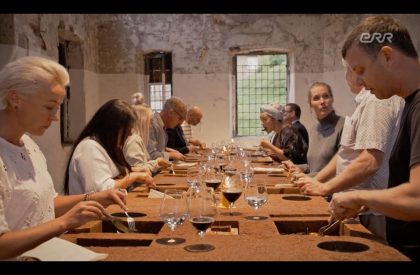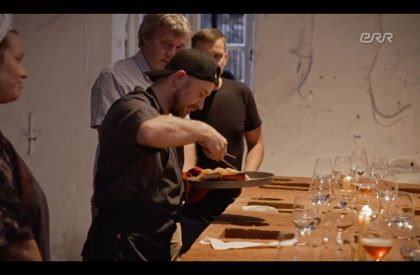Excerpt: The project was completed within seven days as part of the filming of the TV show Restaurant Null. The concept of the show was to create a pop-up restaurant in a week, using existing materials and resources as the show was guided by the concept of zero: 0 budget and 0 footprint. So one of the most central questions for Kuidas.works’s design team arose – with how small of a budget and footprint is their studio able to work?
Project Description
How to make a 15-ton table disappear?
[Text as submitted by architect] Design studio creates a zero-waste temporary restaurant space for a TV show, looking into how design can and should be used as a tool to draw attention to the footprint of the design and building industry. Last summer, the slow-tech spatial design studio kuidas.works (kuidas? – how? in Estonian) was invited to participate in an Estonian TV series Restaurant 0 that aimed to complete a rather challenging task – to build a restaurant in 7 days at zero cost, using smart recycling. The restaurant was designed and built into the ruins of a 19th-century sausage shop in the Old Town of Viljandi, a small town in South Estonia. Last week, the project was announced as the Estonian Interior Architects Union Annual Award laureate 2021 at the annual Estonian Architectural Awards gala. Suppose a design studio is generously handed the opportunity to explore the full range of design possibilities of creating a restaurant experience from scratch with zero budget and without leaving a remarkable footprint. In that case, naturally, the question “how?” arises. By recycling the waste, we can reduce the footprint of fast consumption. However, even when materials are reused, the result can still end up in landfills or incineration. The recycling process itself can also turn out quite costly or unresourceful. Elaborating that point of view, the design team decided to extend the zero-expense paradigm in the TV show by proposing a conceptual centrepiece for the restaurant – a 15-ton rammed-earth table.


The table was an exploration into the simplest, ancient methods – created using the rammed earth technique, using only hand tools and natural materials. Tons and tons of clay were first dried in the sun, then sieved through an old spring mattress frame, carried bucket by bucket into the framework, and finally rammed into a standing height dining table. The earth was mainly of local origin and sourced from a nearby clay quarry. Typical of the Devon era, Southern Estonian earth fluctuates in yellow and ochre undertones. The darker red clay was also from the region: Lithuania. Other main materials used in the project were sand – to level the floor – and lime paint to neutralise the walls covered in graffiti.
The used volumes of clay and sand could easily be reused, but even if the rammed earth table were left in ruins, the materials used would not burden the environment, and the table will slowly but surely fall apart and disappear. In total, less than 1% of the materials – just the tableware – require recycling later on. Materials used for the tableware were wooden trays made from old floorboards from the site, bowls cut from 3-litre glass jars, steel plates, and sleeves of copper tubes used as drinking glass stands.


The pop-up restaurant was built to host 12 guests for a one-night-only 4-course dinner. The standing table aimed to support presence and awareness, adding attentiveness to the dining experience as it won’t let you forget where you are and why. Coming out of the comfort zone is the prerequisite for understanding ecological problems, which was the undertone of the whole show. The design does not have to be about comfortability. It can and should be used as a tool to draw attention, as the design and building industry has one of the heaviest footprints. So whether turning to simple technology is convenient or inconvenient, or whether there are other solutions, is the central question of the concept of this work.
As of now, the team of kuidas.works is looking for challenges in bringing the low-tech design and building methods into the public space while thinking of it as an upgrade rather than a downgrade. The studio aims to shift the paradigm – to bring natural building methods and materials from a marginality to normality.
Restaurant 0 was built in 7 days in the summer of 2021 and was awarded as one of the best interiors of 2021 by the Estonian Association of Interior Architects in February 2022.


